Saturday August 11th… Dear Diary. The main purpose of this ongoing post will be to track United States extreme or record temperatures related to climate change. Any reports I see of ETs will be listed below the main topic of the day. I’ll refer to extreme or record temperatures as ETs (not extraterrestrials)😊. Here is today’s main climate change related topic:
Tipping Point Discussion…Part 3) Arctic Sea Ice
(As usual, this will be a fluid post in which more information gets added during the day as it crosses my radar, crediting all who have put it on-line.)
The subject of Arctic sea ice melt is the most common tipping point or proverbial canary in the coal mine referred to in association with climate change. This entire post could be nothing more than literally hundreds of links to articles on the subject. For this short post let’s hone in on the groundbreaking work involving the scientist that led to the article that inspired me to start writing these segments on the subject of tipping points:
https://www.livescience.com/63267-hothouse-earth-dangerously-close.html
Today let’s show the paper’s main graphic by Will Steffen…a tipping point graphic, which gives us one more piece of valuable information.

Global map by Will Steffen of potential tipping cascades. The individual tipping elements are color- coded according to estimated thresholds in global average surface temperature (tipping points) (12, 34). Arrows show the potential interactions among the tipping elements based on expert elicitation that could generate cascades. Note that, although the risk for tipping (loss of) the East Antarctic Ice Sheet is proposed at >5 °C, some marine-based sectors in East Antarctica may be vulnerable at lower temperatures.) From: http://www.pnas.org/content/early/2018/08/07/1810141115#ref-12
Let’s review. According to the study Greenland Ice is in great jeopardy of disappearing at +1C to +3C above preindustrial global average temperature conditions (post one’s subject). Boreal forests (subject two) at +3.0 to +5.0C, and for today’s subject Arctic summer sea ice at +1.0C to +3.0C and winter Arctic sea ice at greater than +5.0C.
Now we can put some numbers on various tipping point factors, which once breached warm the planet. Again, think of these various tipping point factors as giant natural air conditioners, which keep Earth’s climate stable and cool enough for us humans to thrive and our civilization to continue.
At the current value of around +1.0C above preindustrial conditions we already see that summer Arctic sea ice us trending sharply down. During August it may totally disappear using our best estimates by 2040 and perhaps earlier. Once gone the albedo of open Arctic water won’t reflect nearly as much incoming solar radiation, thus producing a cascade effect of more warming regardless of any more carbon polluted into the atmosphere. If you think we have seen astounding Arctic warming since 2015 and associated changes in the Jetstream and accompanying weather, just wait until the year 2040. This boggles the mind.
We are presently on track toward a middle Miocene range. Path to mid Pliocene or somewhat less is achievable. But will require fast response. Window to 1.5 C has a narrow gap remaining. Super fast response needed for a chance at it. And we will feel each additional 0.1 C hard.
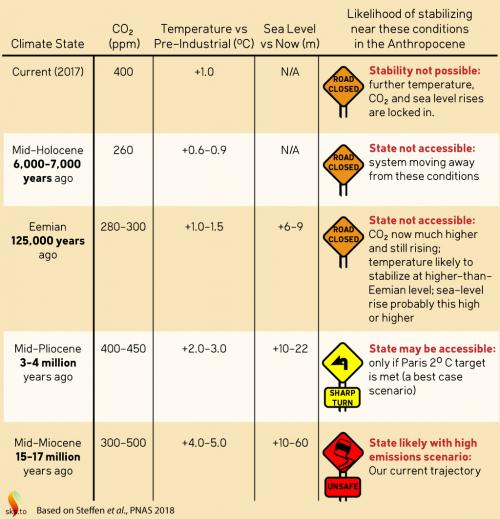
Obviously species depending on Arctic ice like the polar bear will disappear by about mid century. Eskimos and other indigenous people depending on the ice are already adapting to a changing environment, melding into modern society, starting to forget and lose old culture much like native American Indian tribes.
Think of these tipping points also like a set of falling dominos. Should Arctic sea ice disappear we will see a much warmer climate, which in turn will affect boreal forests, the jet stream, and the rest of the tipping point factors depicted on the chart presented today. Warmth will breed warmth once any of these things get tipped, which should scare and spur all of us to act and act now.

………………………………………………………………………………………………………………………
On Sunday ahead of the front cooling down the Pacific Northwest more 90s and 100s will spill into the northern Plains. There maybe more records coming from eastern Montana into the Dakotas :

Most of the Southwest will continue to have unwelcome above average temperatures. Temperatures won’t be too hard to take from the central and southern Plains to the East Coast.
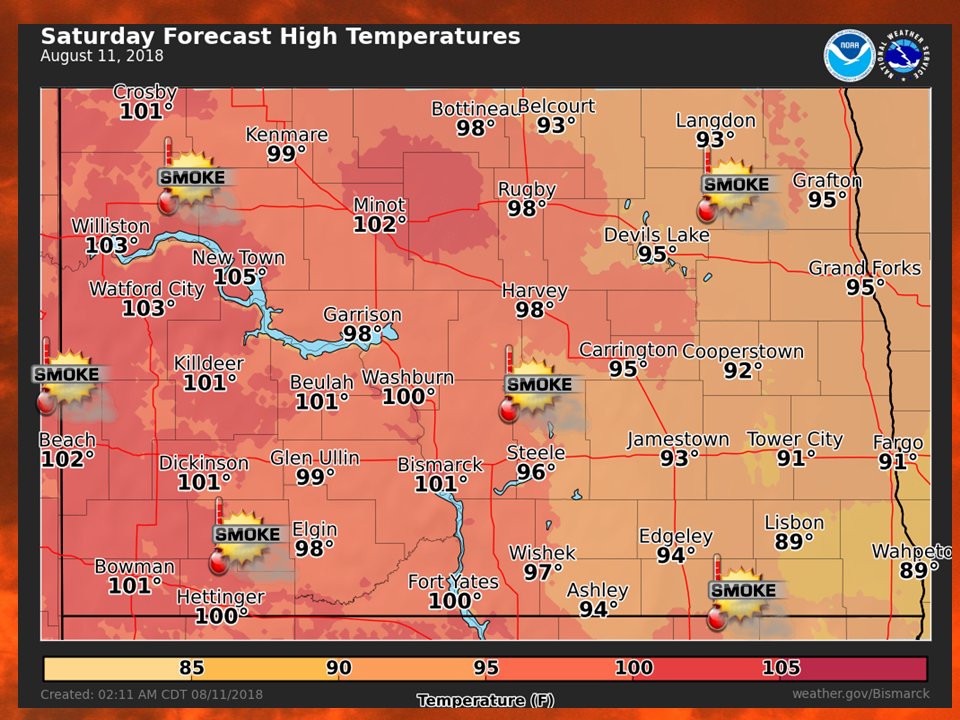
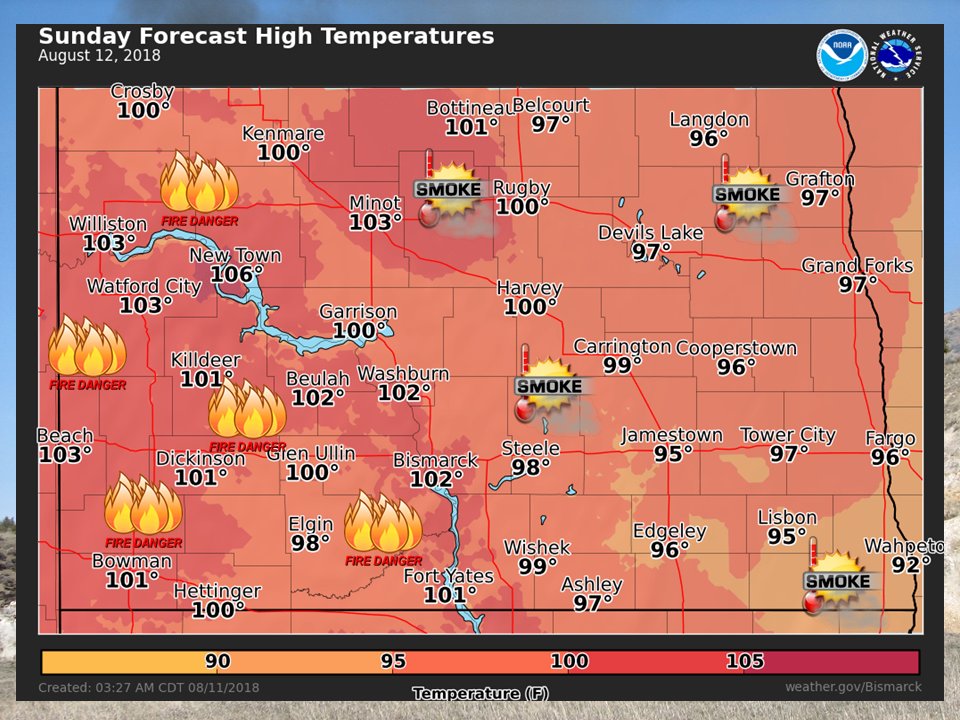
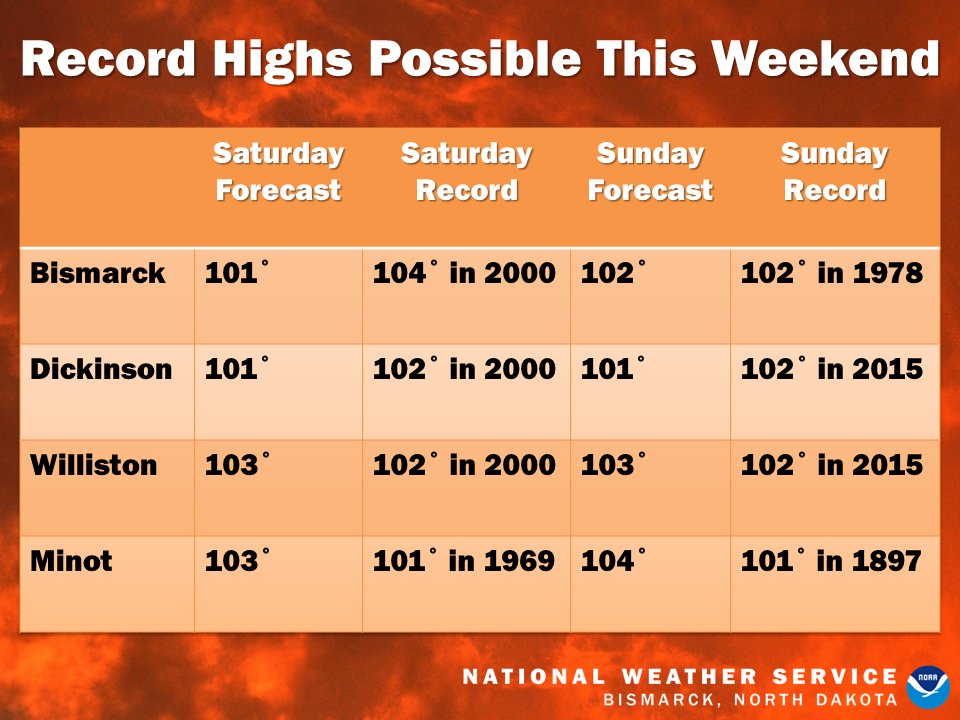
Here is some of today’s climate related news:
 .
. 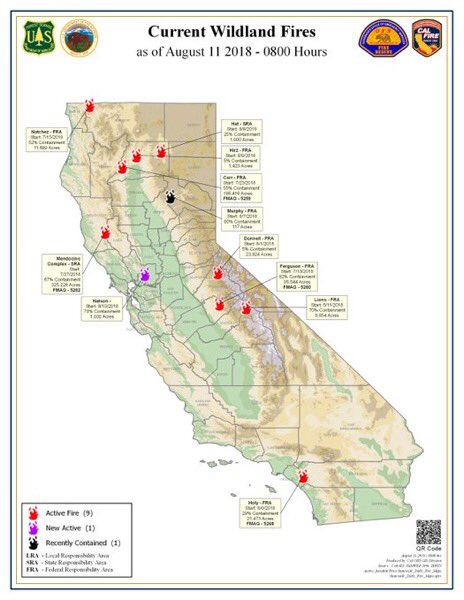
 Am Geophysical UnionVerified account @theAGU
Am Geophysical UnionVerified account @theAGU
By @brendan_bane at #AGUblogs from #AGUpubs
http://ow.ly/gjr530lk6KD
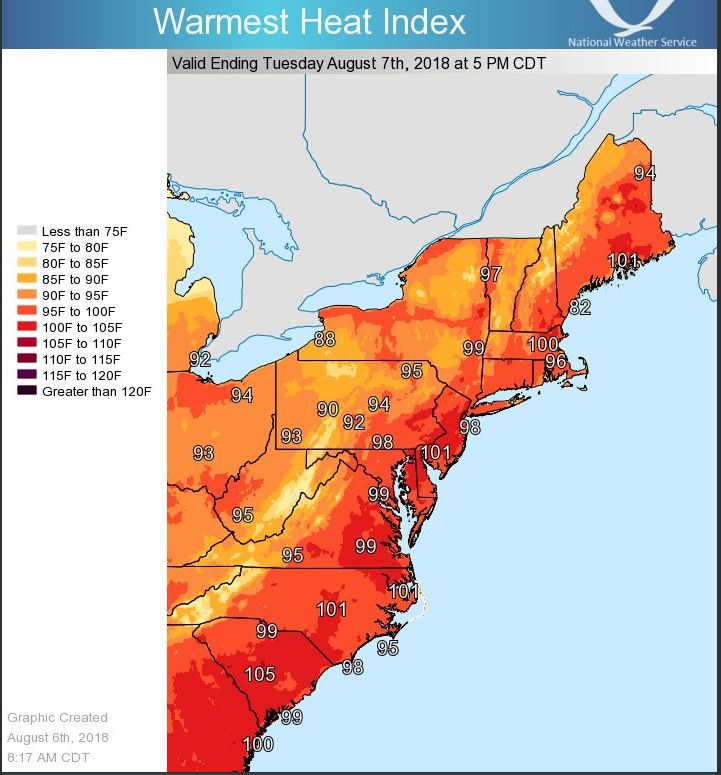
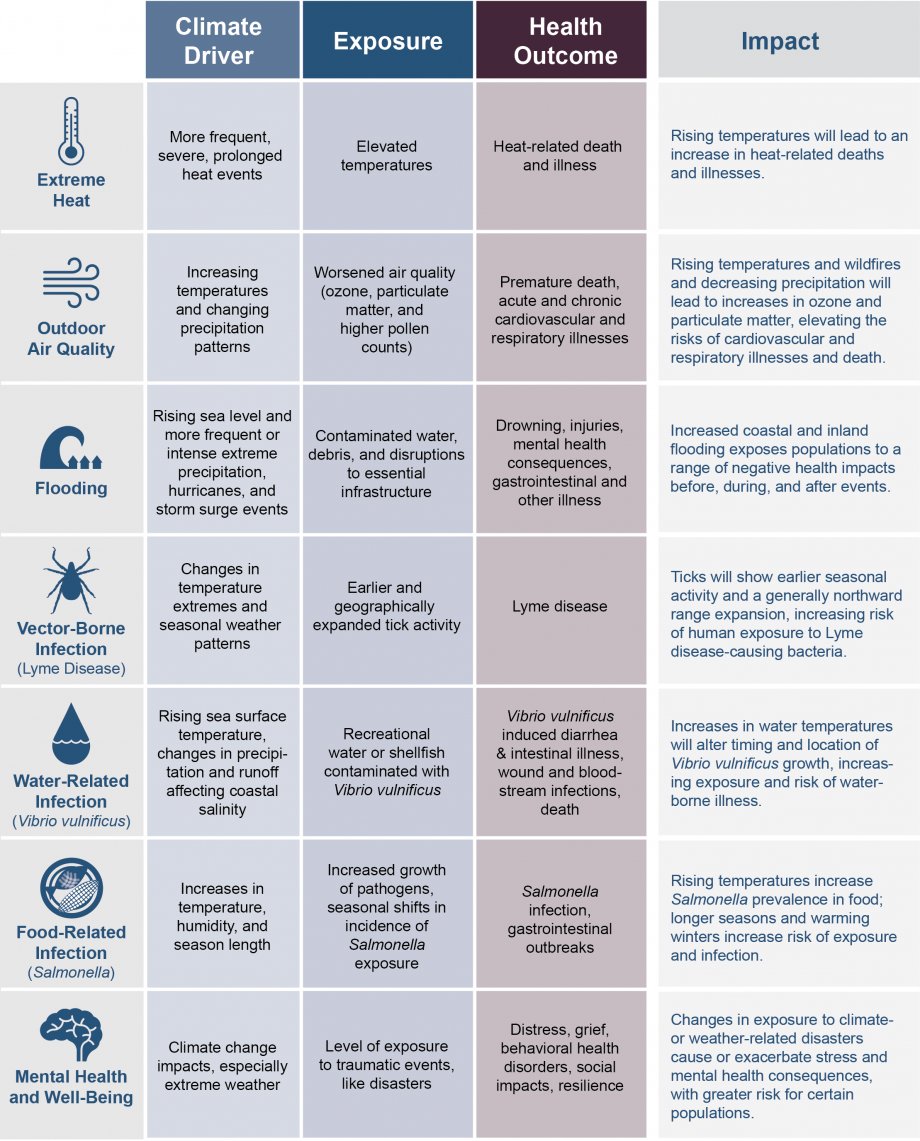
 UN Climate ChangeVerified account @UNFCCC
UN Climate ChangeVerified account @UNFCCC
It took 40 years to reach the 1st trillion watts of installed #wind & #solar generation capacity.
@BloombergNEF expects the next trillion watts to be installed in under 5 years, complemented with battery storage http://buff.ly/2LXjDJ5
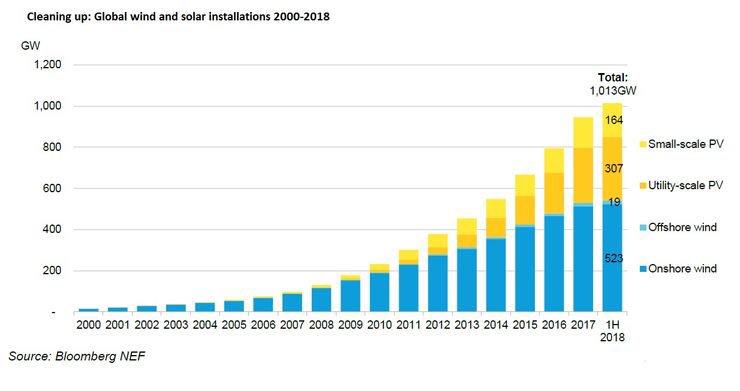
 Bob HensonVerified account @bhensonweather
Bob HensonVerified account @bhensonweather
Better get there while a few glaciers are still there…

 NWS BismarckVerified account @NWSBismarck
NWS BismarckVerified account @NWSBismarck
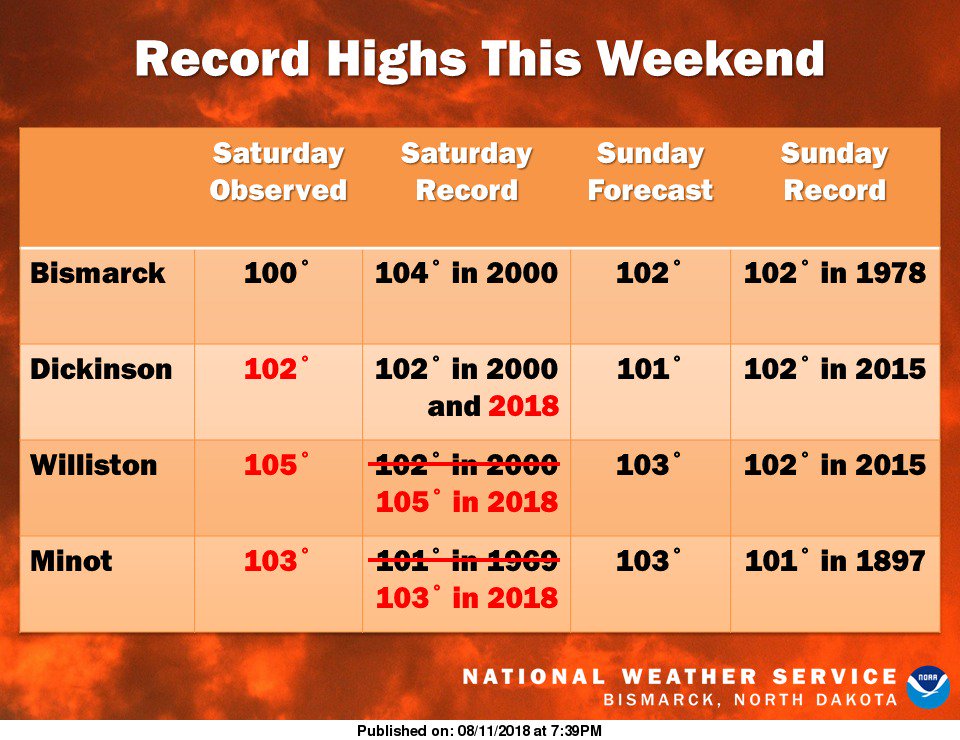
 Bob HensonVerified account @bhensonweather
Bob HensonVerified account @bhensonweather
Saskatchewan’s capital city, #Regina, just had its hottest August day in 136 years of recordkeeping with 41.3°C (106.3°F).
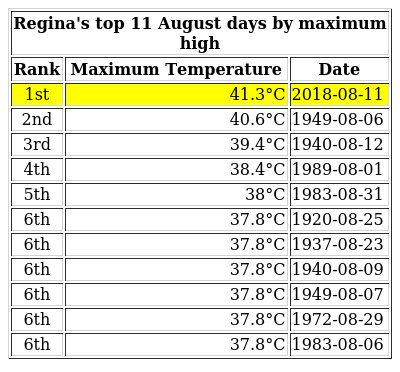
 NWS MissoulaVerified account @NWSMissoula
NWS MissoulaVerified account @NWSMissoula

Record heat smashed eastern Montana and the western Dakotas and built northward into southern Canada. Heat abated in the Pacific Northwest while ramping up a notch over Friday’s values in the Midwest and Plains. Smoke chocked California remained hot.
 Richard Heatwave Berler @HeatwaveKGNS
Richard Heatwave Berler @HeatwaveKGNS
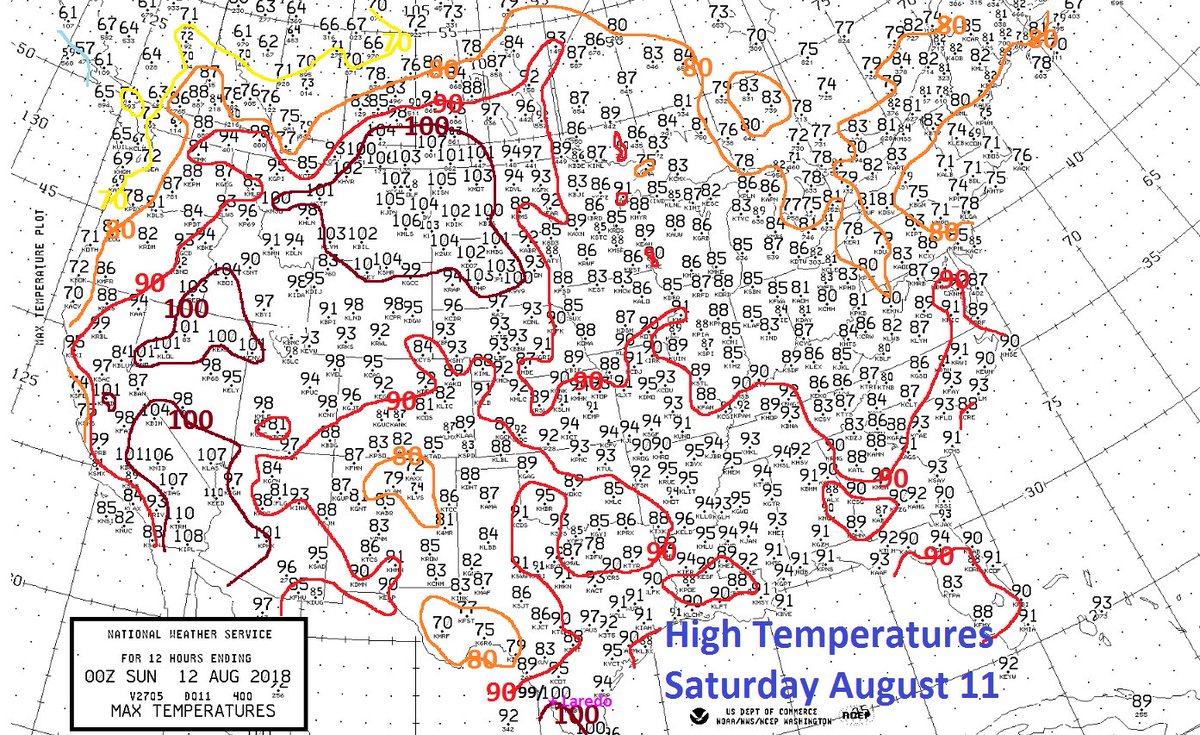
(If you like these posts and my work please contribute via the PayPal widget, which has recently been added to this site. Thanks in advance for any support.)
The Climate Guy





 ALL TIME RECORD HIGH in WEST GLACIER MONTANA
ALL TIME RECORD HIGH in WEST GLACIER MONTANA